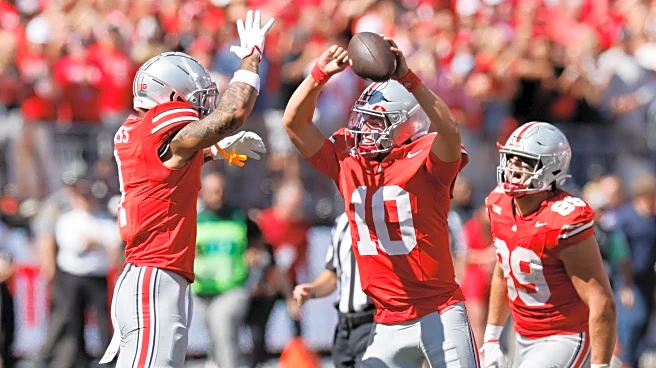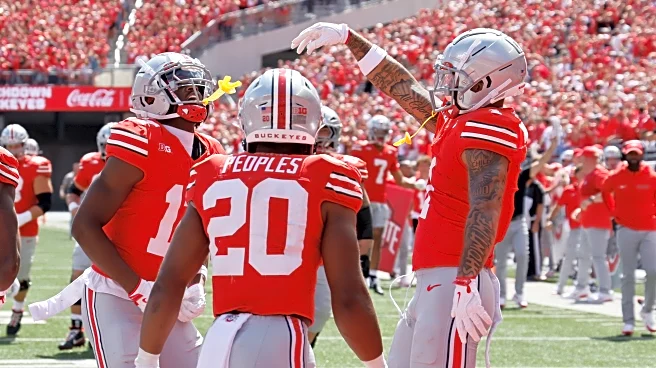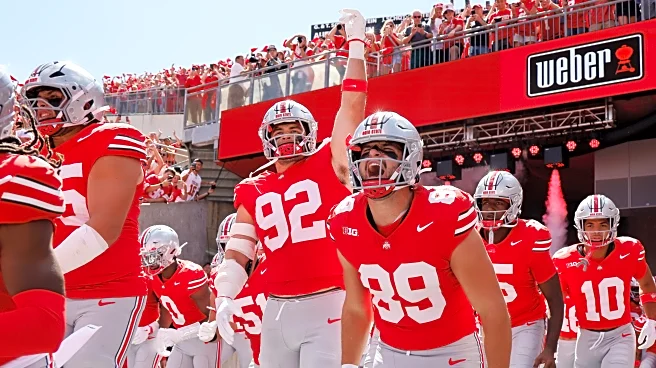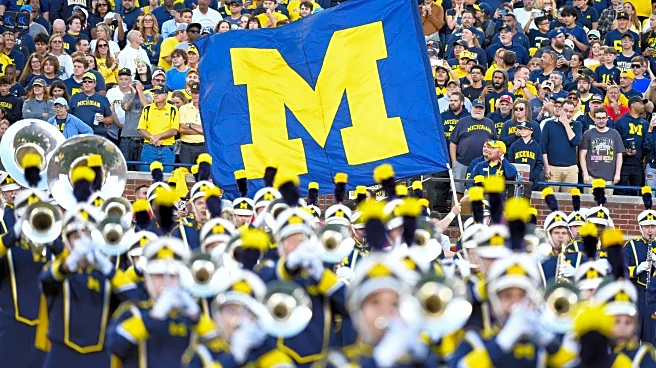What's Happening?
Ohio State has secured the top position in the Associated Press Top 25 college football rankings following their impressive performance against Texas. Despite significant turnover from last season, the Buckeyes demonstrated their strength and potential to remain the team to beat. Penn State, which was initially ranked first in the preseason, dropped to second place despite a convincing win over Nevada. Other teams in the top rankings include Georgia, LSU, and Miami, each showing promising starts to their seasons. LSU's victory over Clemson was particularly notable, with quarterback Garrett Nussmeier outperforming Clemson's Cade Klubnik, a preseason Heisman favorite.
Why It's Important?
The AP Top 25 rankings are a critical measure of team performance and expectations in college football, influencing perceptions and potential playoff selections. Ohio State's rise to the top spot underscores their ability to maintain dominance despite roster changes, setting a high bar for competitors. The rankings also highlight key performances, such as LSU's quarterback play, which could impact Heisman Trophy considerations. These early season results can shape the narrative and strategies for teams as they aim for playoff contention and national championships.
What's Next?
As the season progresses, teams will continue to vie for top positions in the rankings, with upcoming games providing opportunities to solidify or challenge current standings. Ohio State will aim to maintain their lead, while Penn State and other top contenders will seek to capitalize on any missteps. The performance of key players, such as quarterbacks, will be closely watched, potentially affecting individual awards and team success. Fans and analysts will keep a keen eye on matchups that could alter the rankings and playoff prospects.
Beyond the Headlines
The rankings not only reflect team performance but also influence recruitment, funding, and media attention, impacting the broader college football ecosystem. High rankings can enhance a school's reputation, attract top talent, and increase revenue through sponsorships and ticket sales. The dynamics of college football are deeply intertwined with these rankings, affecting long-term strategies and institutional priorities.













